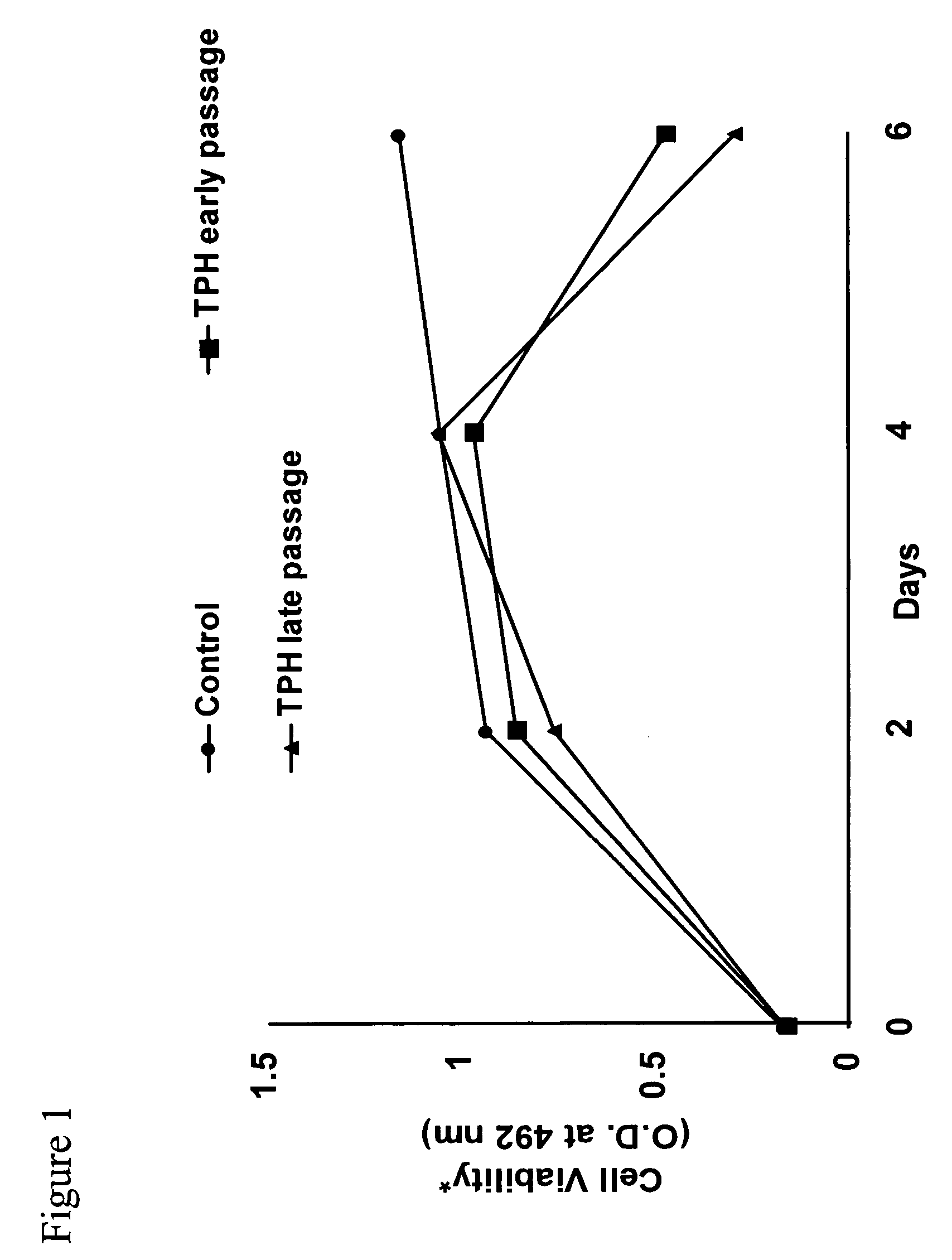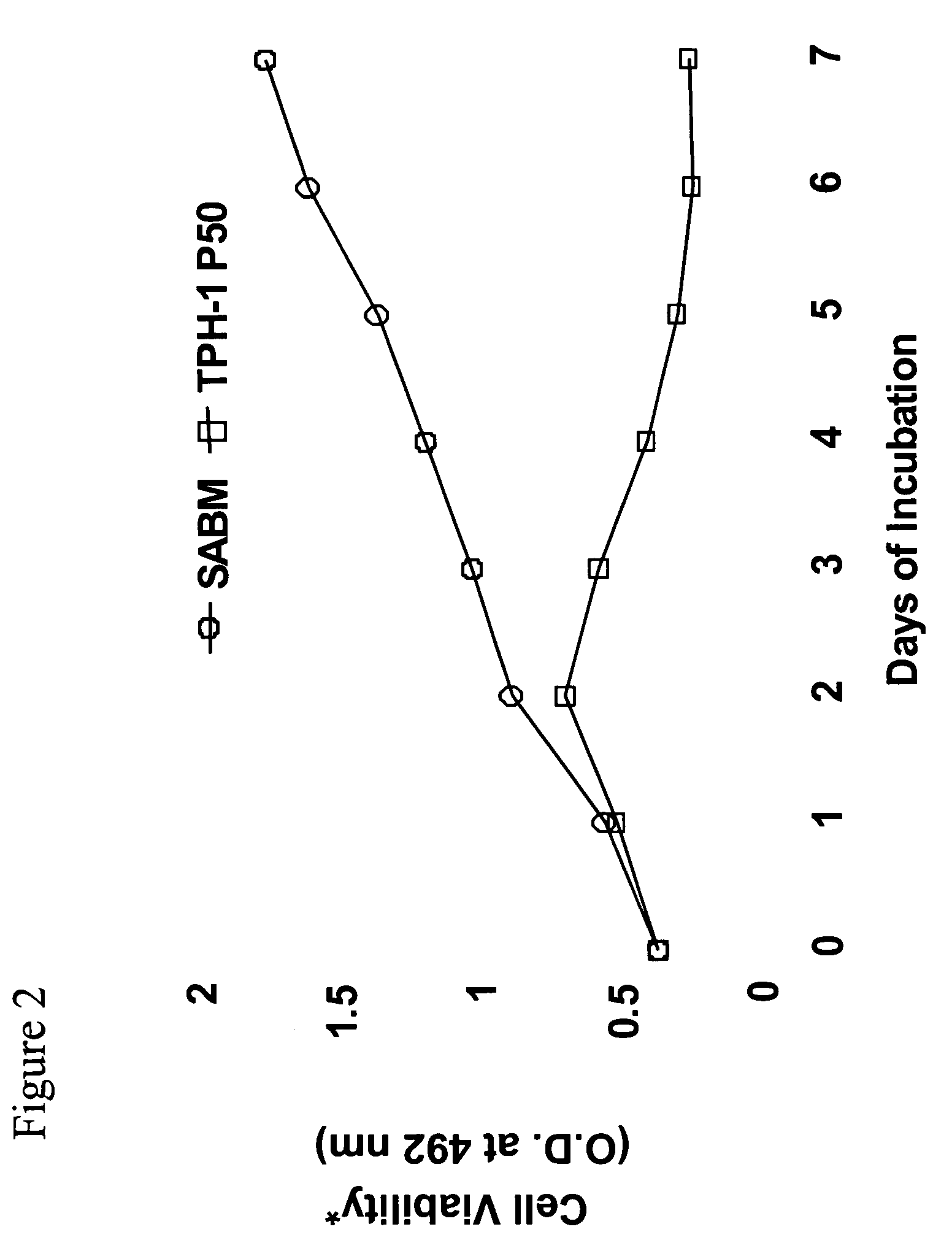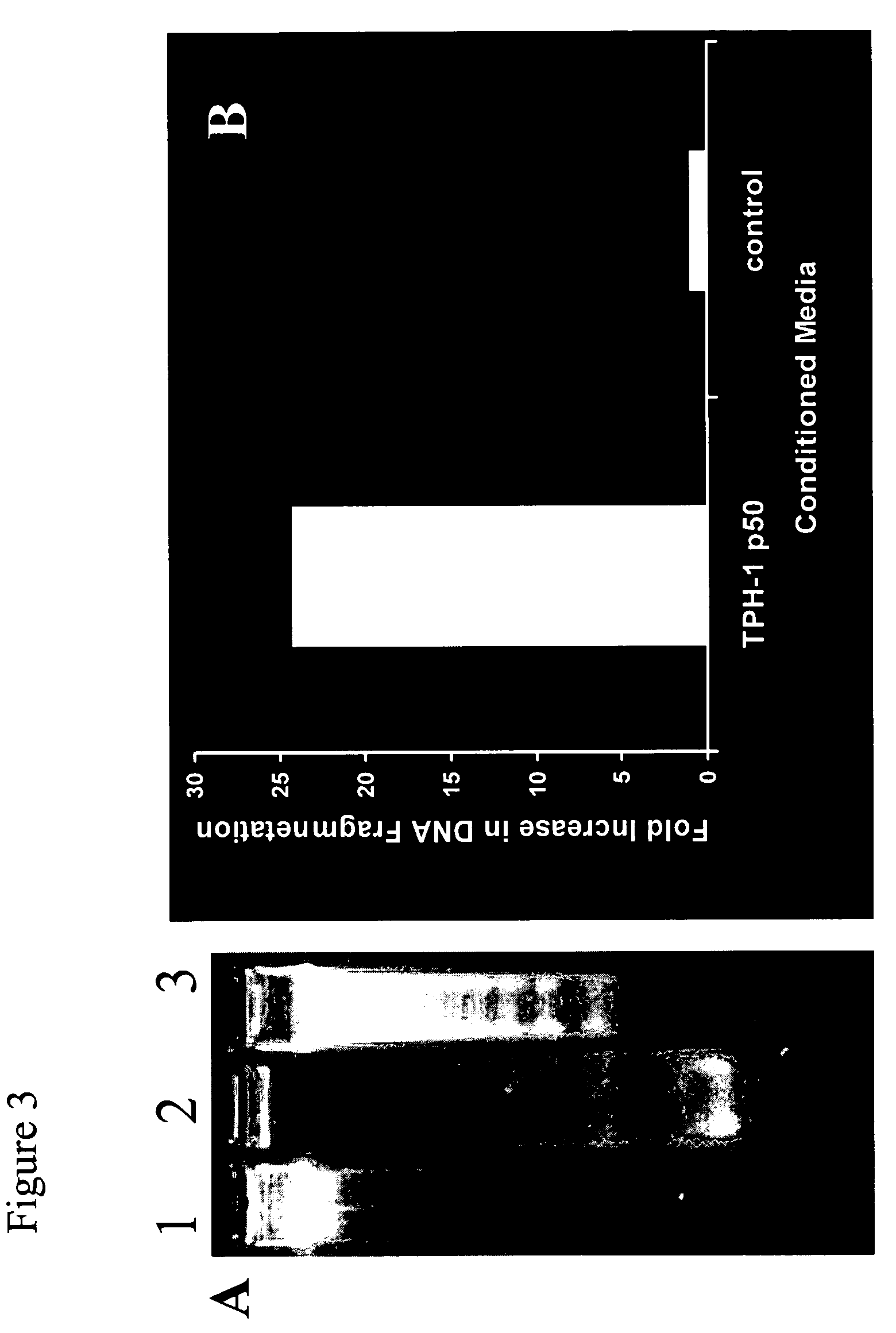Method of manufacturing a stellate cell death factor
a stellate cell and cell death technology, applied in the field of compositions and methods of killing liver stellate cells, can solve the problems of distortion of the liver structure, inability of natural immune responses to terminate hcv infection in most patients, and inability to achieve very effective treatment, etc., to achieve the effect of inhibiting pro-apoptotic activity, reducing sds polyacrylamide gel electrophoresis, and inhibiting proliferation
- Summary
- Abstract
- Description
- Claims
- Application Information
AI Technical Summary
Benefits of technology
Problems solved by technology
Method used
Image
Examples
example 1
Immortalized Hepatocytes Induce Stellate Cell Apoptosis
[0041]We have previously shown that hepatitis C virus (HCV) core protein immortalizes primary human hepatocytes (Ray et al., 2000; Basu et al., 2002). In this study, we investigated the role of the immortalized hepatocytes (TPH) on regulation of hepatic stellate cell growth. Preferential growth of the immortalized hepatocytes was observed when co-cultured with an activated hepatic stellate cell (LX2) line. Further studies suggested that LX2 cells undergo apoptosis when grown with TPH cells in dual chambers or incubated with conditioned medium from TPH cells. However, LX2 cell death was not observed when incubated with conditioned media from a number of nonhepatic epithelial cells (HeLa, BHK, or MCF-7), indicating that TPH cells secrete a specific death factor. The effect of the conditioned media from TPH on LX-2 cells was not due to FasL, TGF-beta, TRAIL, IL-7 or IL-8, as neutralizing antibodies to these cytokines growth factors...
example 2
Methods of Immortalizing Hepatocytes
[0046]Methods of producing immortalized hepatocytes for use in producing the conditioned media of the instant invention, are described in detail in Ray et al., 2000, and Basu et al., 2002, which are herein incorporated in their entirety by reference. A exemplary method is summarized below.
[0047]Cell growth regulatory potential of HCV core protein was investigated by introduction of the core genomic region into primary human hepatocytes, a natural host for virus replication and tropism (Ray et al., 2000). Interestingly, core transfected primary human hepatocytes (TPH) were immortalized and exhibited continuous growth for more than three years. In contrast, similar transfection with core deletion mutants (Core aa 26-85 and Core aa 80-150 or gene encoding nucleocapsid protein (NP) from an unrelated human parainfluenza type 3 virus (HPIV-3) as controls did not immortalize primary human hepatocytes. We have so far established immortalized hepatocytes f...
example 3
Purification and Identification of Stellate Cell Death Factor
[0059]Media conditioned by immortalized hepatocytes (supra) were concentrated, then diluted with four volumes of buffer H (20 mM Hepes, pH 7.4, 15% glycerol), and loaded onto a 2 ml Q-SEPHAROSE anion exchange column that had been pre-equilibrated with buffer H. The flow through was collected and loaded directed onto a 2 ml SP-column. After washing the column with 5 ml of buffer H, the bound protein was eluted with 5 ml of buffer H containing 0.5 M NaCl. 1 ml fractions were collected, analyzed by the stellate cell based apoptosis assay (supra) as well as SDS-PAGE, followed by Coomassie Blue staining. One major band was observed in the active fraction. That band was subjected to N-terminal micro sequencing, revealing both albumin and fetuin sequences (SEQ ID NO:9 and SEQ ID NO:1, respectively).
[0060]To ensure that this is indeed the protein that leads to cell death, the fractions eluted from the SP-column were pooled and dia...
PUM
| Property | Measurement | Unit |
|---|---|---|
| pH | aaaaa | aaaaa |
| pH | aaaaa | aaaaa |
| flow rate | aaaaa | aaaaa |
Abstract
Description
Claims
Application Information
 Login to View More
Login to View More - R&D
- Intellectual Property
- Life Sciences
- Materials
- Tech Scout
- Unparalleled Data Quality
- Higher Quality Content
- 60% Fewer Hallucinations
Browse by: Latest US Patents, China's latest patents, Technical Efficacy Thesaurus, Application Domain, Technology Topic, Popular Technical Reports.
© 2025 PatSnap. All rights reserved.Legal|Privacy policy|Modern Slavery Act Transparency Statement|Sitemap|About US| Contact US: help@patsnap.com



